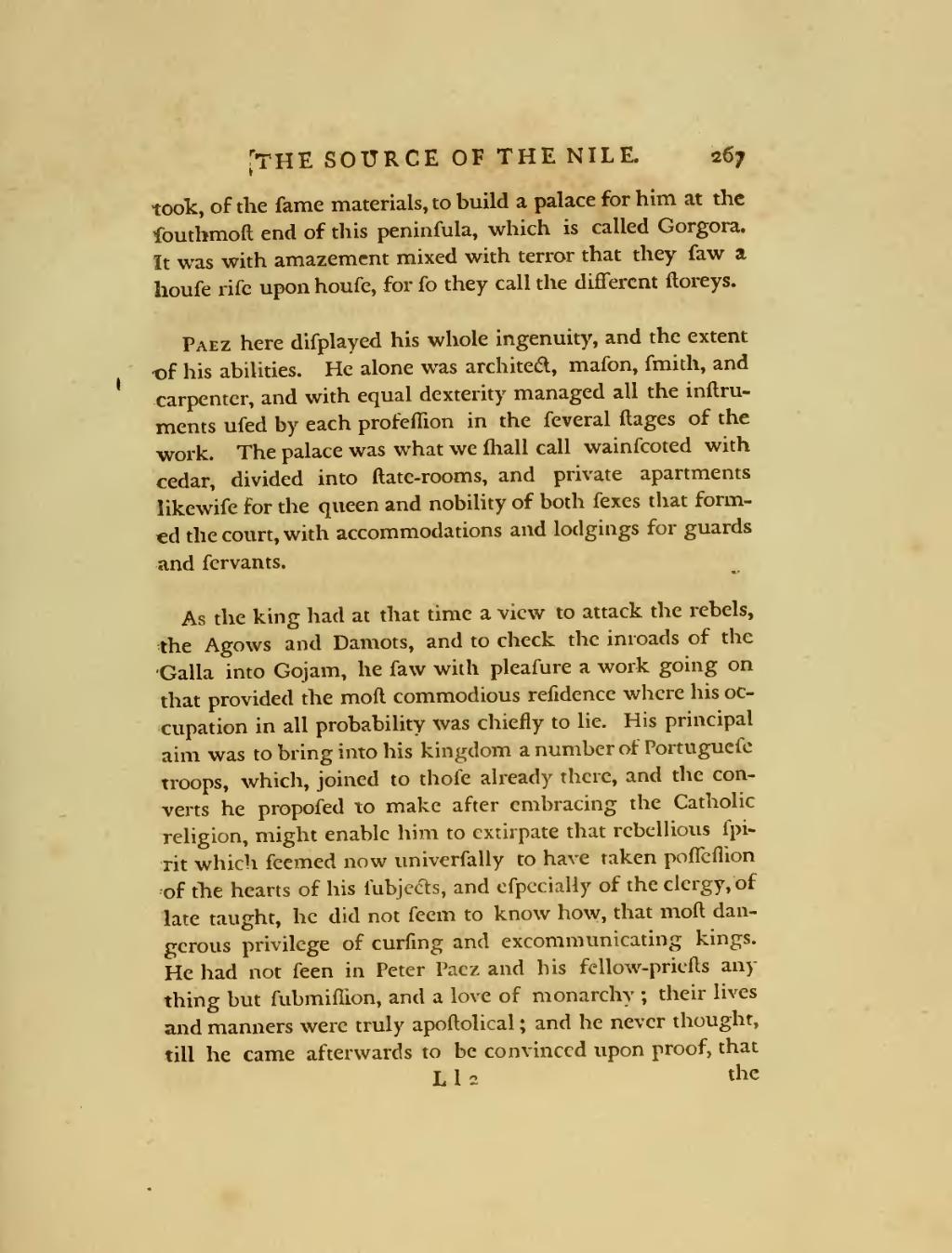took, of the same materials, to build a palace for him at the southmost end of this peninsula, which is called Gorgora. It was with amazement mixed with terror that they saw a house rise upon house, for so they call the different storeys.
Paez here displayed his whole ingenuity, and the extent of his abilities. He alone was architect, mason, smith, and carpenter, and with equal dexterity managed all the instruments used by each profession in the several stages of the work. The palace was what we shall call wainscoted with cedar, divided into state-rooms, and private apartments likewise for the queen and nobility of both sexes that formed the court, with accommodations and lodgings for guards and servants.
As the king had at that time a view to attack the rebels, the Agows and Damots, and to check the inroads of the Galla into Gojam, he saw with pleasure a work going on that provided the most commodious residence where his occupation in all probability was chiefly to lie. His principal aim was to bring into his kingdom a number of Portuguese troops, which, joined to those already there, and the converts he proposed to make after embracing the Catholic religion, might enable him to extirpate that rebellious spirit which seemed now universally to have taken possession of the hearts of his subjects, and especially of the clergy, of late taught, he did not seem to know how, that most dangerous privilege of cursing and excommunicating kings. He had not seen in Peter Paez and his fellow-priests any thing but submission, and a love of monarchy; their lives and manners were truly apostolical; and he never thought, till he came afterwards to be convinced upon proof, that
